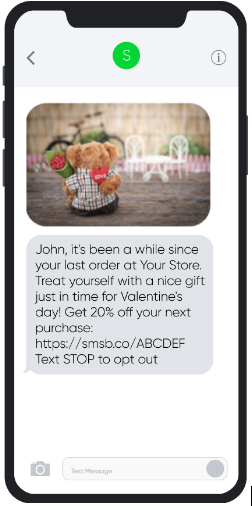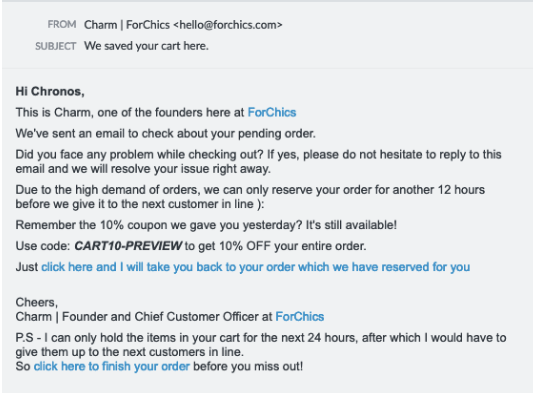
Takeaways From 3 Major eCommerce Trends in 2020


2020 is coming to a close, and eCommerce stores are either winding down from the big sales of the year or revving up to prepare for 2021. While we’re hoping that the COVID-19 pandemic permanently logs off from our lives, let’s look back at the eCommerce trends that appeared during the crisis, particularly during the Black Friday and Cyber Monday (BFCM) sales period.
1. Mobile Shoppers are Mobilizing
During this year’s Cyber Monday, 37% of sales came from mobile devices. This rising trend in mobile-based online purchases emphasizes the need to optimize your online store and marketing strategies for mobile viewing.
Double-check that your promotional materials display properly on mobile devices. While PC users rarely have issues, your promotional material’s deliverability on mobile devices can make or break a potential sale.
Additionally, the rise of mobile shopping meant that more people were glued to their phones. This opened the door for the comeback of SMS marketing.
SMS marketing has been a rising trend in the eCommerce space even before 2020, but only now has its impact been noticeable due to the surge of online shopping activity.
Here’s one example of how SMS marketing can foster re-engagement:

Is your marketing team practicing omnichannel marketing? Or are you already adopting mobile marketing and SMS? Turns out, 79% of mobile users’ buying decisions are influenced by SMS opt-ins. And given the 98% average open rate for text messages, you can be sure your SMS marketing campaigns are converting.
Not only does this prove that SMS is making a comeback, but it also shows how effective and relevant SMS is as a digital marketing tool today.
2. High Online Traffic Opens Up More Sales Opportunities
Widespread stay-at-home and social distancing policies were put in place due to the pandemic. What do you get when you have the majority of the world’s population holed up at home? Answer: a huge surge in online shopping activity.
Even routine chores like buying groceries have become online activities. Apparently, this was just a preview of what eCommerce businesses can expect in the future.
Further, BFCM sales in 2020 were 15.1% higher than last year. And as more consumers catch up with online purchases, many brands extended their Cyber Monday sales into week-long events.
Here’s an eye-opening takeaway though: just because more people are online doesn’t mean you’re maximizing your reach. You need to convert website visitors, for example, into paying customers. After all, high traffic flow is only a half-open door of opportunity. The majority of website visitors leave without buying anything.
Retargeting is a great way to reach out to customers who have visited your site before, a strategy that can be used well with product retargeting emails. Check out this recent BFCM’s top converting channels—solid proof of conversions from the online world.

Another way to ensure you’re reaching as many customers as possible is by optimizing your email send times. Based on this year’s stats, 25% of Cyber Monday sales happened between 7 PM to 11 PM.
So should you only send your emails at these times? The short answer is… you don’t have to.
Different online stores have different audiences, and different audiences have different online behaviors. The most effective tactic is to find the best time for your brand through A/B testing. That way you can reliably determine the time frames that your audience is most active.
3. Automation is the New Standard
Email automation is becoming the backbone of many eCommerce stores. In fact, it’s one of the biggest eCommerce trends of 2020.
During this year’s Black Friday, automated messages generated 16% of email revenue. And after that, on Cyber Monday, automated emails generated 20% of all email revenue.
The best thing about automation is that it happens in the background so you can focus on making other sales on the frontlines.
More specifically, cart abandonment emails generated 49.2% of automated email revenue during Black Friday (and 46.5% during Cyber Monday). Here’s an example of one of our top-performing cart recovery emails for a client:

It’s all about reaching out to your customers with the right messages at the right time—with minimal effort. Pair this up with optimized segmentation practices and your store will be a couple more (big) steps closer towards 8-9 figure levels of success.
Ideally, your emails should be generating 30% of your store’s total revenue. When done right, they can help you plug usually overlooked revenue leaks in your store’s back-end operations as well as open up new revenue generation opportunities.
Final Thoughts on 2020 eCommerce Trends
What makes a business successful is not the ability to follow a proven formula — it’s the ability to adapt to change.
The eCommerce industry, as well as the customers you sell to, are ever-changing. So make sure your marketing strategies are always up-to-date so they can be up for the next big challenge.
If you adjust your marketing plans to take advantage of these eCommerce trends, you should have a clear path for your brand in 2021.
And what are the marketing strategies you need? Find out in the new Chronos masterclass on Advanced 8-Figure Email Systems.
In this course, Chronos Agency co-founder and CEO Joshua Chin walks you through the strategies and high-converting email templates you need to crush your email marketing woes and reach your email goals.

